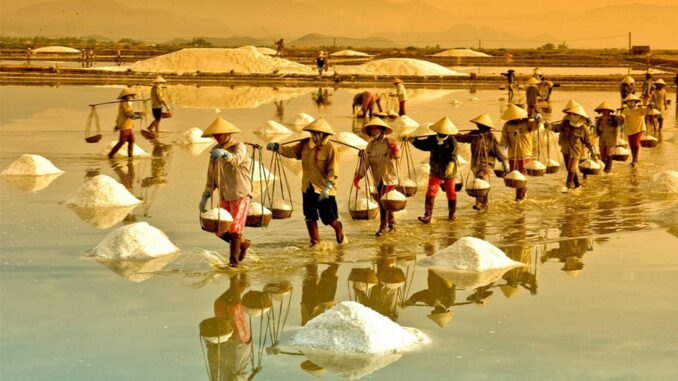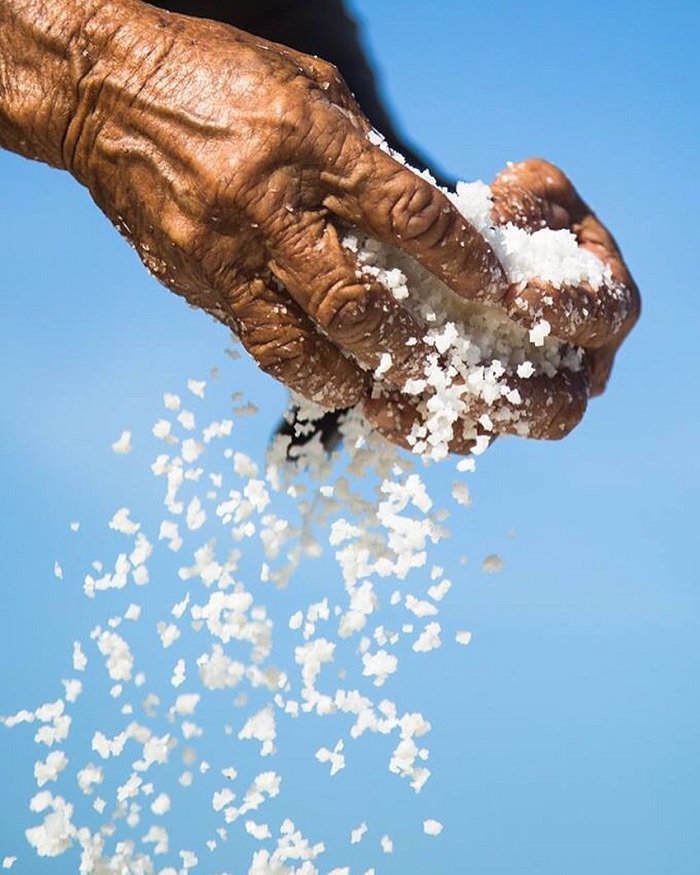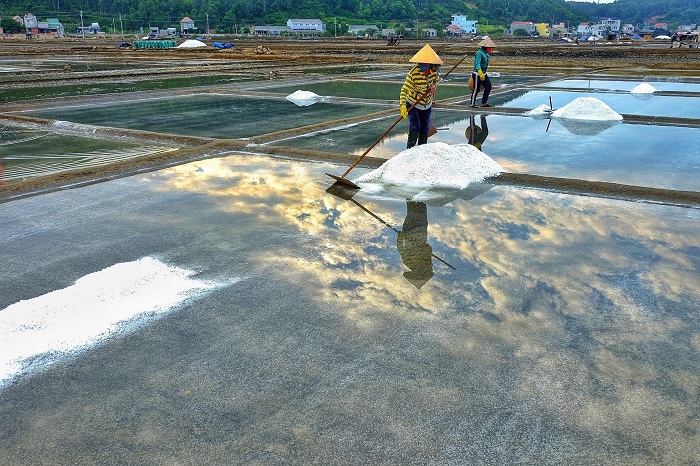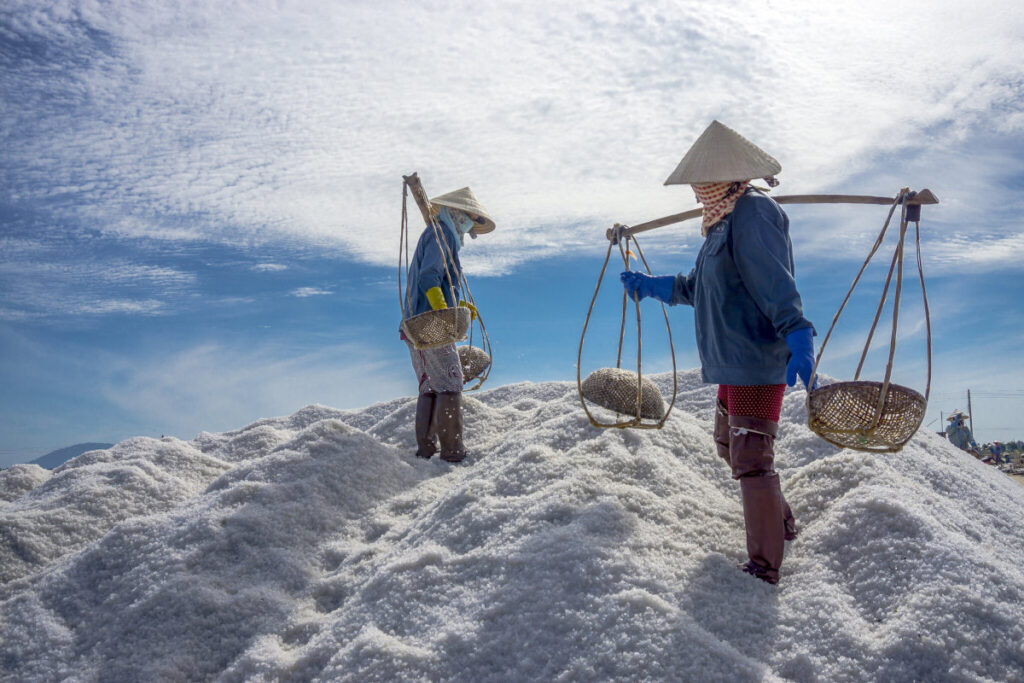
Vietnam is a country with a long coastline and a rich maritime culture. One of the most distinctive and fascinating features of Vietnam’s coastal areas is the traditional salt field, where natural salt is harvested manually from shallow pools along the shore. The traditional salt field is not only a source of livelihood for many local people, but also a cultural and economic heritage that reflects the history, identity, and values of the Vietnamese people.
The origin and the meaning of the traditional salt field
The exact origin of salt production in Vietnam is unknown, but it is believed to have begun thousands of years ago. Early Vietnamese likely observed the natural process of salt crystallization along the coast and developed methods to collect and refine it. Over time, these methods evolved into the traditional techniques still used today.
The traditional salt fields represent much more than just a source of salt. They are deeply embedded in Vietnamese culture and identity, symbolizing:
- Hard work and resilience: Salt production is a demanding and challenging process, requiring dedication and perseverance in the face of harsh conditions.
- Connection to the land and sea: The salt fields are a tangible link between the Vietnamese people and their natural environment.
- Community and tradition: Salt production is often a family affair, passed down from generation to generation. It fosters a strong sense of community and preserves valuable cultural traditions.
- Sustainability: Traditional salt production methods are more environmentally friendly than industrial methods, making them a valuable part of a sustainable future.

The diversity and the beauty of the traditional salt field
The traditional salt field varies from one region to another, due to the differences in geography, climate, and ethnicity. The traditional salt field can be found in many coastal provinces of Vietnam, such as Khanh Hoa, Ninh Thuan, Binh Dinh, Thai Binh, Vung Tau, Quang Ngai, Nam Dinh, and Bac Lieu. Each region has its own characteristics and features of the traditional salt field, such as the size, the shape, the color, and the quality of the salt.
The traditional salt field involves a long and complex process, which requires a lot of effort and skill from the people and depends much on nature. The sea water is pumped or led into the large fields, which are divided into small plots by bamboo or wooden fences. The water is then exposed to the sun and the wind until it evaporates, leaving behind a layer of salt crystals on the ground. The salt is then scraped, collected, and dried, before being packed and transported to the market or the factory.

The salt field is not only a practical and productive activity, but also a cultural and artistic expression of the Vietnamese people. The salt field creates a stunning and unique landscape, which changes with the seasons and the time of the day. The traditional salt fields of Vietnam are more than just places of production; they are also cultural and historical landmarks. They represent the ingenuity and resourcefulness of generations of Vietnamese people who have learned to harness the power of the sun and the sea to create a valuable commodity.

Furthermore, the salt fields support a vibrant community of salt makers who have passed down their knowledge and traditions from one generation to the next. These communities play a vital role in preserving Vietnam’s cultural heritage and ensuring its future.
However, traditional salt production in Vietnam faces several challenges, including increasing competition from industrial salt producers, rising sea levels, and climate change. As a result, many traditional salt fields are disappearing, and the livelihoods of salt makers are threatened.

In conclusion, the traditional salt fields of Vietnam are a testament to the country’s rich history and cultural heritage. These fields represent the ingenuity and resourcefulness of generations of Vietnamese people, and they continue to play a vital role in the lives of many communities.
We would be pleased to have you visit and take in our breathtaking scenery, unwind on our white sandy beaches, immerse yourself in our exquisite culture, and get to know the people of the friendliest nation. Especially, to savor our delicious food at restaurants with Michelin ratings or to come and participate in our incredible mega-events involving culture, music, sports, and tourism!
Make your plan to Vietnam right now by obtaining a Vietnam visa at https://www.vietnam-evisa.org. We, a reputable and reliable Visa service, will assist you turn your plan into reality at the very first step.